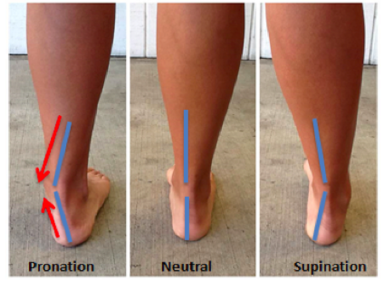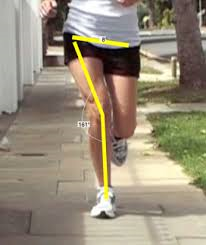Knee pain sucks, especially if you’re an athlete. Unfortunately, The clinic sees a lot of runners and athletes with knee pain. Running and deep squatting already place a bunch of stress on the knee and if you aren’t moving properly (ie: good technique) the situation gets worse. Individuals with knee pain usually present with some 'interesting' ways of moving that lead to knee pain.
The only way to get permanent relief is to fix the movements that caused the problem in the first place.
Fortunately for us, in most people with knee pain the poor movement is predictable and fixable, providing the client is willing to work!
As with most injuries, once you’re hurt you’ll probably have to take some time off from exercises that bother your knees. This is a great time to see a Physiotherapist. Some soft tissue work and manual therapy is sometimes exactly what the doctor ordered to get this area to calm down and stop hurting. While the area heals up and your knee pain starts to decrease you can get to work on fixing these common problems.
Obviously, each persons mechanics and anatomy is slightly different. This is an online article and I’m not saying that everyone is going to have the same problems with the same solutions. However, we see a lot of the same things over and over again with knee pain in this athletic and less athletic population, and applying these principles have been successful. If you’ve ever been diagnosed with chondromalacia patella, patellofemoral pain syndrome or IT band syndrome then this article is for you.
Cause #1 – Poor Ankle Mobility
This one is absolutely huge, especially if you’ve got a history of ankle sprains or instability. I’d say that most people could benefit from some extra ankle dorsiflexion and those with knee pain usually have significant limitations here. If you lack Dorsiflexion in the ankle then whenever you squat your knees will end up shifting inward into a rubish position (Genu Valgus). This puts you on the fast track to knee pain city.
The same thing can happen with running. Basically any exercise that requires a significant amount of ankle mobility into dorsiflexion can cause this problem. This means lunges, pistols, squatting, running, jumping and landing!
Cause #2 – Poor Foot Stability
I get people ask me about their knee pain frequently and they’ve usually got a history of plantar fasciitis, heel pain or Achilles tendon pain on the same leg. People who complain to me about foot pain often have knee problems too. The two are linked.
What I’m getting at here is that if you have a lot of pronation (flat feet) while standing at rest and especially with single legged exercises like running, we’re going to have our knee move into the same poor genu valgus position that causes knee pain (notice the runner’s knee coming in and their foot flattening out on their right leg).
This phenomenon will happen during running, jumping, landing and all types of lifting (especially single leg exercises).
What’s important to keep in mind is that our knees are slaves to the foot and hip. If you’ve got poor movement (poor stability in this case) at the foot, you’ve got poor movement at the knee. The research supports this too, those with a flatter foot (more pronation) are more at risk for knee pain. We’ve been wearing shoes to help support our feet our entire lives, is it any surprise that our feet are weak and lack stability?
Cause #3 – Poor Hip External Rotation and Abduction Strength
Your jumping movements should never look like this...
What this means is that if we are lacking strength in our hips to help keep our knee in a safe position, we’ll find ourself in genu-valgus again.
Keep in mind that the muscles in your feet are way weaker then the muscles in our hips. Of course if we want a shot at fixing the knee we need to attack the issue from both sides (feet and hips). However, the hips muscles are large and powerful and will most likely have more influence on our knee position then the feet.
Cause #4 – Poor Hip Mobility
The hips are strong and stable joints with many large muscles and ligaments contributing to it’s inherent stability and strength. Because of this and our tendency to do a ton of sitting throughout the day, they can get extremely tight.
This principle is going to apply mainly to deep squat variations. If we are tight in our adductor (groin) musculature and limited in hip external rotation and flexion then problems may lie ahead. Limitations here will bring us right back into genu valgum at the bottom of a squat and that’s not desirable.
Cause #5 – Poor Core Stability
This picture beautifully sums up what’s going on in your legs that lead to knee pain. Take note of what’s going on with that big bowl shaped bone in the person’s hips called the pelvis. It’s tilting to the person’s left.
As you can see, this seems to set up a chain reaction for all of the joints below. Just like we need to address stability at the foot and hip we need to address stability at the core. When I say core I’m addressing all of the musculature that attaches to the before mentioned bone called the pelvis. These muscles have a direct effect on the position of our hips and subsequently our knee as well.
Cause #6 – Too Much Weight, Too Many Reps
Your brain is very obedient. If you tell it to squat 200kg for 10 repetitions it’s going to try its damnedest. The only problem is that with fatigue or too much weight we have a natural tendency to break our form. In the case of the squat our feet flatten and our knees move inward. This is because your body is looking for extra stability to help lift the weight.
Think about it. The weight is too heavy to keep a nice arch in your foot so your foot flattens and rests on a bunch of bones all compounded together. Our knees cave in and we get extra stability from the ligaments in our knee. Problem solved right? We get the weight up. Good job brain, teamwork for the win.
The only problem is that these structures were not meant to bear weight. Over time we develop pain because we’re stressing structures that aren’t meant to be stressed. Unfortunately if we do this too often over time we can create permanent damage and some good old knee surgery. (Meniscus tears anyone?) Unfortunately our total knee replacements don’t provide us with super human strength yet.
So when we’re looking to correct knee pain we’ve got to take a total body approach. I love foam rolling and other forms of soft tissue work, manual physiotherapy and taping techniques as much as the next guy but…
The only real solution to the problem is going to be fixing the movement that caused the problem in the first place.
In part 2, we will show you specific exercises to address these common causes of knee pain.
References
Powers C M. The Influence of Abnormal Hip Mechanics on Knee Injury: A Biomechanical Perspective. Journal of Orthopaedic and Sports Physical Therapy February 2010 vol 40:N 2:42-51
Behnke R. Kinetic Anatomy 2nd Edition Human Kinetics 2006
Macrum, E., Bell, D., Boling, M., Lewek, M., & Padua, D. (2012). Effect of limiting ankle-dorsiflexion range of motion on lower extremity kinematics and muscle-activation patterns during a squat. Journal of Sports Rehabilitation, 21(2), 144-150. Retrieved from http://www.ncbi.nlm.nih.gov/pubmed/22622377
Barton, C., Bonnano, D., Levinger, P., & Menz, H. (2010). Foot and ankle characteristics in patellofemoral pain syndrome: A case control and reliability study.Journal of Orthopaedic and Sports Physical Therapy, 40(5), 286-296.







